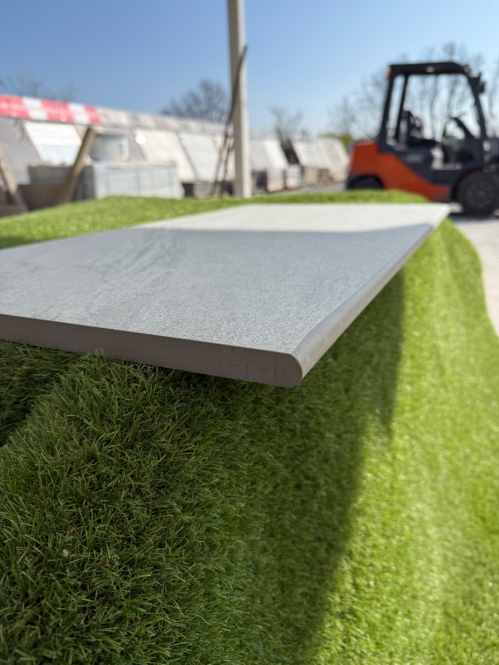Bull Nose Steps
Thinking about adding steps to your garden? Sandstone steps offer a modern finish to any patio design and will allow you to seamlessly transition from one level of your space to another, or from inside to out.
Our design-friendly Bullnose Steps are a fantastic solution for pool surrounds or wall copings and can also be used around water features or as part of a seating area. Sandstone steps will combine with the rest of our natural stone paving range to suit your design needs. to add the perfect finishing touches to your patio.
We stock our Sandstone Steps in a range of colours and finishes to match
our Sandstone Paving range.
You can call our helpful team on 01482 688008 or Email us sales@meltonstone.co.uk
Bull Nose Steps
How to cut sandstone?
Sandstone is durable and can be difficult to cut, so it's important to go slowly and take safety precautions. Here are some tools and methods you can use to cut sandstone slabs:
Circular power saw
A precise and quick method that's recommended for cutting paving slabs. Use a circular saw with a diamond masonry blade, which is designed to cut through stone without dulling. You can also use a dust impression system, like a water pump, to help with cutting
How to lay Indian sandstone paving?
Here are some steps for laying Indian sandstone:
1. Dig the foundation Allow 150 mm for the foundation mix and paving. If the stone is next to a house, the patio should be at least 150 mm below the damp proof course.
2. Prepare the foundation Use a concrete mix of 6 parts all in one ballast to 1 part cement to create a firm foundation.
3. Prepare the mortar Mix 5 parts sharp sand to 1 part cement in a semi-dry mix. You can also use a ratio of 4 parts sand to 1 part cement for filling the joints.
4. Prime the slabs Use a slurry primer to help with adhesion and prevent salt blooms.
5. Lay the slabs Place the slabs on the mortar bed, 8–10 mm apart, and tap them down firmly with a rubber mallet. Make sure the slabs are snugly fitted together, like a puzzle. Ensure that all junctions between slabs are "T" joins, not "+" joins where all four corners touch.
6. Fill the joints Use a trowel to fill the joints with the mortar mix. You can also use a resin-based jointing compound. Compress the mortar into the joints with a pointing tool.
7. Let it set Allow the sandstone to set for at least 24 hours before walking on it, or longer in wet weather.
Is sandstone paving hard wearing?
Yes, sandstone paving is generally considered to be hard wearing and durable. Sandstone is a sedimentary rock that has been compressed over millions of years, making it resistant to wear. It's also naturally weather resistant and can last for hundreds of years if properly maintained. Sandstone paving is often used for patios, paths, and driveways. It comes in a variety of colours, textures, and patterns, and can create an authentic feel with its naturally riven surface.
However, sandstone is porous and can be susceptible to erosion from water and wind over time. It can also crack or chip under extreme conditions or if installed improperly. To help prevent these issues, you can:
Seal it: Once the sandstone has had time to dry and settle, you can apply a sealant to reduce water absorption and prevent staining and discoloration.
Clean it regularly: Sandstone paving requires regular cleaning.















